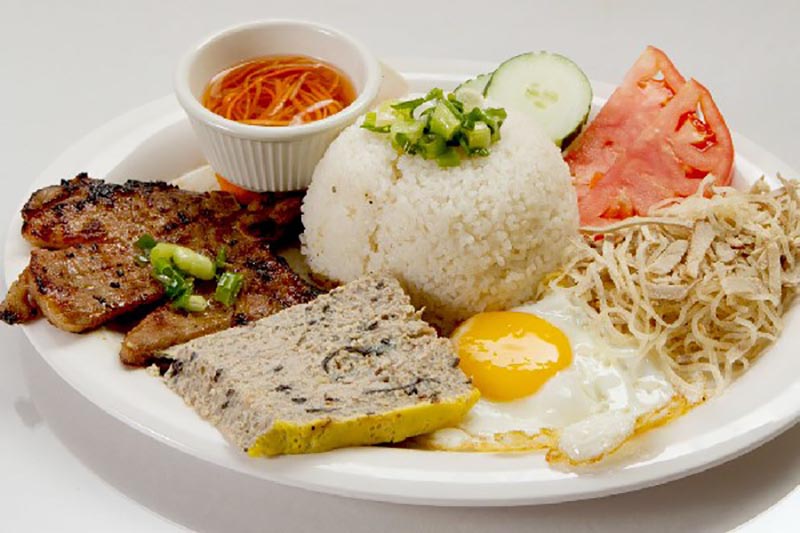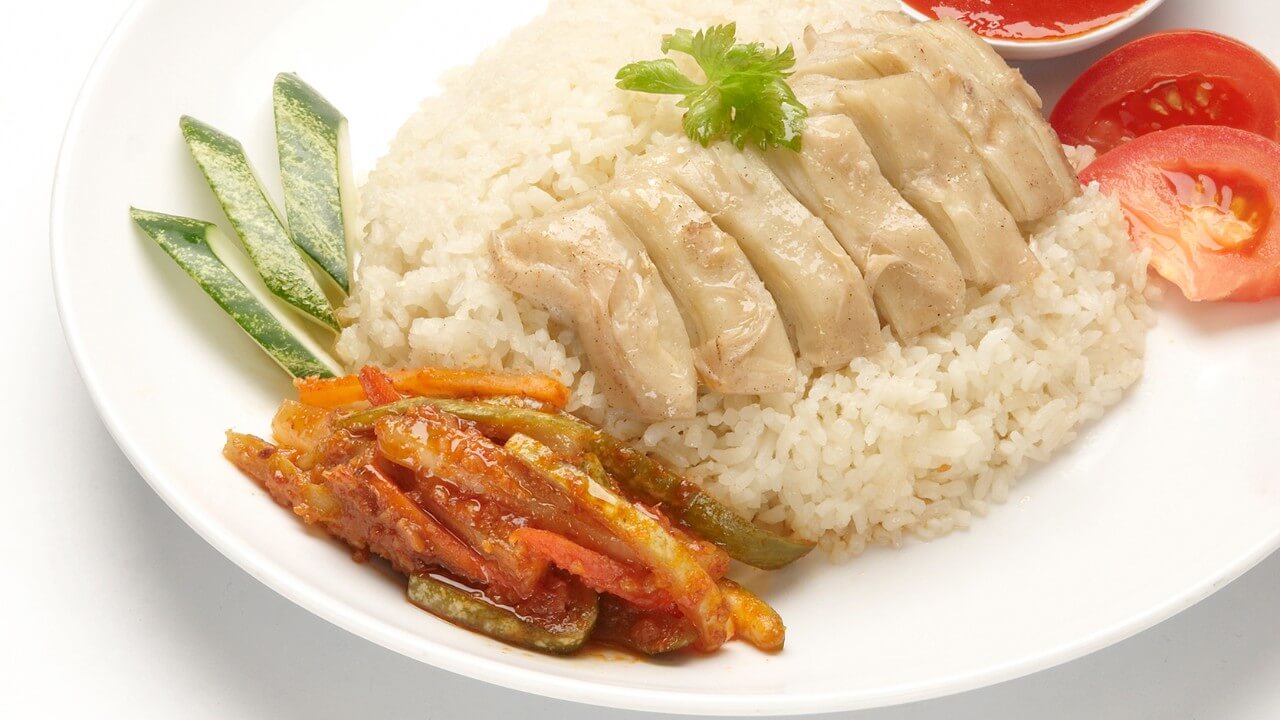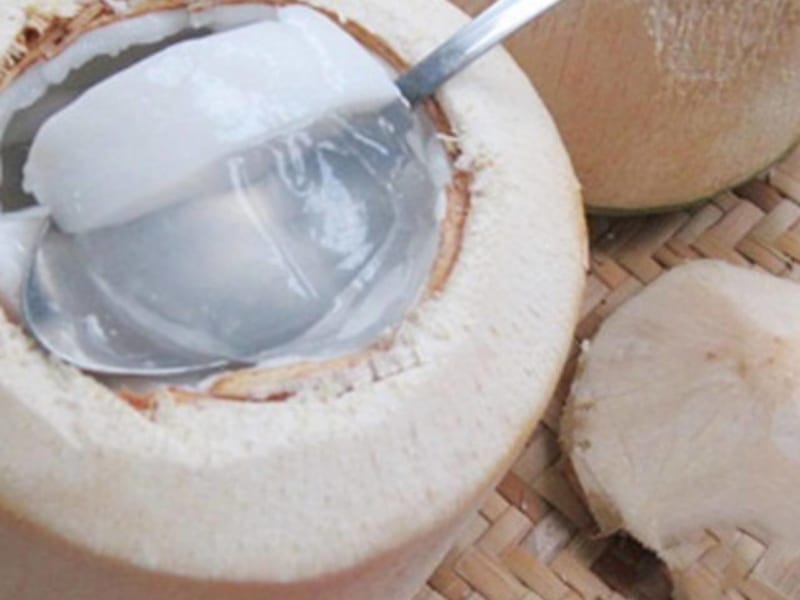I. Introduction
1.1 Common Lunch In Vietnam Overview
Common lunch in Vietnam offers a tantalizing glimpse into the rich tapestry of Vietnamese cuisine. Known for its fresh ingredients, intricate flavors, and regional diversity, Vietnamese lunchtime fare showcases an array of rice-based and noodle dishes.
The options are as varied as the country’s topography, ranging from the famed Pho, a fragrant noodle soup, to Banh mi, delicious baguette sandwiches. Vegetarians may enjoy Com chay and Pho chay, while street food favorites like Goi Cuon (fresh spring rolls) and Banh Xeo (sizzling pancakes) add to the gastronomic adventure.
Vietnamese lunch is a journey of flavor, culture, and tradition that creates a lasting impact since each area gives its own distinctive take on classic meals.

1.2 Importance of Lunch in Vietnamese Culture
In Vietnamese culture, lunch is highly valued since it serves as both a filling meal and a treasured social event. In order to develop ties and promote a feeling of community, families and friends frequently come together for lunch.
Business meetings and discussions can also be held over lunchtime over a shared meal, highlighting the importance of food in fostering goodwill and confidence.
Additionally, Vietnamese devotion to culinary quality and the preservation of their culinary legacy is shown in the emphasis on fresh, locally obtained ingredients and the thoughtful preparation of meals, making lunch a crucial component of cultural identity.

II. Rice Dishes
2.1 Com tam (Broken Rice)
Com tam, also known as broken rice, is a popular Vietnamese meal that displays the country’s ingenuity and culinary originality. Com tam has evolved from its humble beginnings as a delicacy formed from broken rice grains that were regarded less desirable.
A pleasing fusion of tastes and textures is achieved when the rice is often served with a range of accompaniments, including grilled pork, fried eggs, and pickled vegetables.
Com tam is a famous street food and restaurant dish that is liked by both locals and tourists. Its accessibility and delectability are a tribute to Vietnam’s ability to transform basic materials into delectable dishes.

2.2 Com ga (Chicken Rice)
Com ga, often known as chicken rice, is a delicious Vietnamese meal that has aromatic rice topped with soft poached chicken. A mixture of fragrant herbs and spices are frequently used to marinade the chicken, giving it a unique taste.
A dipping sauce composed of fish sauce, lime, garlic, and chili is commonly served with com ga, giving each bite a delicious zing. This meal exemplifies the Vietnamese devotion to simplicity and balance in their cuisine; the dish’s harmonious taste combination has made it a national favorite comfort food.
Com ga is a well-known and enduring staple of Vietnamese cuisine, whether it is offered as street food or in high-end restaurants.

2.3 Com suon (Pork Chop Rice)
Vietnamese cuisine’s delectable Com Suon, or pork chop rice, is made out of a grilled or marinated pork chop that is served over a bed of fragrant jasmine rice. Usually, a fragrant marinade with fish sauce, lemongrass, and garlic is used to season the pork chop, giving the meal a pleasant balance of salty and sweet overtones.
Fresh herbs, pickled vegetables, and a side of dipping sauce made of fish sauce are frequently served with com suon, resulting in a well-balanced combination of tastes and textures. This dish is a popular staple of Vietnamese street cuisine and exemplifies the nation’s appreciation for straightforward yet flavorful combinations that satisfy the palette and warm the heart.

III. Noodle Dishes
3.1 Pho (Vietnamese Noodle Soup)
The world-famous Vietnamese noodle soup known as pho is regarded as a culinary marvel. Thin rice noodles are dipped in a rich, aromatic broth that has frequently been cooked for hours with herbs and spices like star anise, cinnamon, and ginger to create this fragrant and heart-warming dish.
Customers may customize their bowls to their tastes by adding fresh herbs, bean sprouts, lime, and chili to the classic beef (pho bo) or chicken (pho ga) bowls that are supplied with it.
In Vietnam and beyond, pho is a representation of coziness, culture, and culinary prowess since it perfectly captures the delicate taste harmony of Vietnamese cuisine.

3.2 Bun cha (Grilled Pork Noodles)
Served over a bed of vermicelli noodles in the mouthwatering Vietnamese delicacy bun cha are grilled pig patties and slices of pork belly. Before being expertly grilled, the meat is marinated in a delectable mixture of spices including fish sauce, garlic, and honey.
Bun cha offers a pleasant mix of tastes and textures, with the smoky, savory beef teaming beautifully with the light, refreshing noodles and herbs. It is typically served with fresh herbs, lettuce, and a dipping sauce.
Vietnam is known for its ability to produce foods that are filling and bursting with flavor. This dish is a common option for lunch there.

3.3 Mi quang (Turmeric Noodles)
Mi Quang is a meal from Vietnam that is revered for its vivid yellow noodles that have been flavored with turmeric. This regional speciality is made with a variety of ingredients, including roasted peanuts, fresh herbs, shrimp, and pork, and it originates in central Vietnam.
The noodles are usually paired by a hard-boiled egg and a delicious, slightly sweet broth. The secret of Mi Quang’s appeal is found in the dish’s tasteful blending of textures and tastes, which combines the warmth of turmeric with the freshness of the herbs and the richness of diverse proteins.
This meal is a favorite lunchtime treat and captures the spirit of central Vietnamese cuisine.

IV. Rolls and Wraps
4.1 Goi cuon (Spring Rolls)
Goi cuon, often called Vietnamese spring rolls or fresh spring rolls, are a well-liked Vietnamese appetizer or snack. These transparent rice paper wraps are stuffed with a delectable mixture of fresh herbs, vermicelli noodles, shrimp, pork, or other meats.
The rolls are frequently accompanied by a side of hoisin-peanut dipping sauce, which gives them a sweet and savory contrast. Goi cuon is renowned for being light and refreshing, making it a popular option in hot weather. These rolls are an explosion of tastes and textures that highlight how important it is in Vietnamese cuisine to use fresh ingredients and maintain balance in each bite.

4.2 Banh mi (Vietnamese Sandwiches)
Vietnamese sandwiches, or banh mi, are a popular street snack that combine French and Vietnamese culinary traditions.
A crusty French baguette is used to make this wonderful dish, which is packed with a variety of ingredients, including meats that have been marinated and grilled, fresh herbs, pickled vegetables, and savory sauces like mayonnaise and chili sauce. The crunchy bread acts as the ideal vehicle for the salty, sweet, and sour components inside the banh mi, which is a wonderful fusion of textures and flavors.
It is a popular dish among both residents and visitors because it is a convenient and filling lunch choice that showcases the variety and creativity of Vietnamese cuisine.
:max_bytes(150000):strip_icc()/classic-banh-mi-4844177-hero-01-236ece4af179446888909d052ef61016.jpg)
4.3 Banh xeo (Vietnamese Pancakes)
Vietnamese banh xeo, also known as sizzling pancakes or banh xeo, is a delicious and flavorful food that is similar to a crispy crepe. The word “banh xeo” means “sizzling cake,” alluding to the sound the batter creates when it contacts a hot griddle.
Usually prepared with rice flour and coconut milk, these golden-hued pancakes are stuffed with a combination of shrimp, pork, bean sprouts, and spices. Banh xeo, which has a crispy outside and a delicious, herb-infused inside, is typically served with a side of fresh lettuce or herbs and a dipping sauce.
It is a well-liked street snack and a joyful demonstration of Vietnamese cuisine’s artistic talent.

V. Vegetarian and Vegan Options
5.1 Com chay (Vegetarian Rice)
For those who prefer a vegetarian diet, the delicious Vietnamese cuisine com chay, commonly known as vegetarian rice, is the perfect option. Offering a harmonious and savory blend of veggies, tofu, and occasionally imitation meat over a bed of fragrant jasmine rice, this dish exemplifies the inventive use of plant-based components.
The meal is frequently seasoned with flavorful herbs, sauce, and spices to make it a delightful and gratifying alternative for vegetarians and vegans. Com chay is an example of how Vietnamese cuisine can adapt to different dietary needs while still preserving its distinctive flavor and cultural diversity.

5.2 Vegetarian Pho
Vegans and vegetarians may both enjoy vegetarian pho, a plant-based version of the well-known Vietnamese noodle soup. This variation uses a substantial vegetable broth that has been flavored with fragrant herbs and spices like star anise, cinnamon, and cloves in place of the conventional beef or chicken stock.
The soup has a pleasing fusion of tastes and textures thanks to the addition of rice noodles, fresh herbs, tofu, and veggies. Vegetarian pho showcases the versatility and inclusion of Vietnamese cuisine by preserving the flavor of the original meal while providing a delightful, cruelty-free substitute.

5.3 Tofu and Mushroom Dishes
Vietnamese food frequently features tofu and mushrooms, providing a delicious fusion of plant-based flavors and textures. A filling source of protein is tofu, which is frequently seasoned and stir-fried to perfection. Various kinds of mushrooms give meals an earthy depth.
These meals satisfy both vegetarians and those seeking to experience the varied and flavorful offers of Vietnamese cuisine, whether they are used as ingredients in soups like Canh chua (sour soup) or stir-fried with a variety of vegetables and fragrant herbs.

VI. Street Food Delights
6.1 Bun thit nuong (Grilled Pork Vermicelli)
A well-known Vietnamese delicacy called bun thit nuong, which translates to “grilled pork vermicelli,” brilliantly captures the spirit of Vietnamese cooking. Over a bed of delicate vermicelli noodles, marinated and grilled pork is presented in this delectable meal.
Fresh herbs, bean sprouts, crushed peanuts, and a dressing made of fish sauce are frequently used as garnishes for this meal. The harmonic contrast of aromas and textures produced by the mix of the delicate, smokey pork and the cooling noodles is wonderful and gratifying.
Vietnamese people frequently eat bun thit nuong for lunch, which exemplifies the nation’s talent at combining savory, sweet, and fresh ingredients into a single, delectable dish.

6.2 Banh canh cua (Crab Noodle Soup)
Vietnamese delicacy banh canh cua is a rich noodle soup with crab as its main component. Thick, chewy rice noodles are included in the meal, which is served in a savory broth with crabmeat and crab paste that has a deep, salty flavor.
Fresh herbs, scallions, and a dash of black pepper are frequently used as garnishes, which enhance the dish’s tastes and create a lovely combination of umami and freshness. Banh canh cua is a popular meal for people looking for a taste of genuine Vietnamese cuisine since it exemplifies the Vietnamese culinary history of creating complex flavors and textures while showcasing the nation’s plentiful seafood options.

6.3 Xoi (Sticky Rice)
Sticky rice, also known as xoi, has a unique position in Vietnamese food and culture. This traditional meal can be created in a variety of sweet and savory ways using glutinous rice.
Served with mung bean paste, shredded coconut, or as a side to savory dishes like grilled meats, xoi is a staple dish in Vietnam that gives people energy and a sense of home.
It is a cherished and crucial component of Vietnamese culinary history due to its adaptability and capacity to be prepared for various events and flavors.
)
VII. Etiquette and Dining Customs
7.1 How to Eat Like a Local
Embrace the collaborative nature of the meal to experience Vietnamese cuisine like a native. To begin, use a spoon and chopsticks to appreciate the dishes’ varied textures and tastes.
Use the fresh herbs, lime, chile, and sauces that are placed on the table to personalize the taste of your meal. It’s appropriate and a gesture of satisfaction to slurp your noodles or make loud thank-you noises while eating.
Investigate local restaurants and street food stands since they can provide the most genuine and enjoyable experiences. Last but not least, enjoy the cultural custom of sharing food with your dining partners since it encourages a spirit of community and camaraderie, which is a prized feature of Vietnamese eating culture.

7.2 Common Dining Practices
Sharing and group eating are highly valued in everyday meal customs in Vietnam. Family-style meals are frequently provided, with dishes placed in the middle of the table so that everyone may eat them together. It is typical to eat with chopsticks and a spoon, and customers frequently add fresh herbs and seasonings to their food. It’s polite to wait for the host or the senior citizen at the table to start eating while you’re out to dine.
In addition, it’s usual to signify that you’ve eaten enough food by raising your bowl a little bit. Although not customary in Vietnam, tipping is appreciated when given for very great service. Overall, dining in Vietnam is about more than simply the cuisine; it’s also about the social interaction and relationships that are formed during shared meals.

VIII. Popular Beverages
8.1 Vietnamese Coffee
Vietnamese coffee is a robust, sweet coffee that was first produced in Vietnam and has since spread around the globe. It is prepared by placing a tiny metal filter known as a phin on top of a coffee cup that contains sweetened condensed milk.
The condensed milk and ground coffee are then combined in the phin after hot water has been poured over it and let to gently trickle down the filter. The resultant coffee is delicious, rich, and creamy.
Vietnamese coffee is frequently consumed with a snack or dessert on the side and is generally served over ice or hot. Robusta beans are used, and condensed milk adds additional sweetness, giving it a unique flavor.

8.2 Tea
Vietnamese tea is a popular drink in Vietnam and is available in a broad range of tastes and types. Green tea, lotus tea, jasmine tea, and chrysanthemum tea are a few of the most well-liked varieties of tea. Vietnamese tea culture is heavily influenced by Chinese and Vietnamese traditions, and it is frequently drank during family get-togethers and on important occasions.
Vietnamese green tea, or “tra xanh,” is a popular aperitif that is frequently served hot or iced. In order to fully appreciate the tea’s natural flavor and scent, it is often prepared in a tiny teapot or infuser and served without milk or sugar. High-quality lotus tea, which is created by encasing lotus seeds in green tea leaves and letting them dry, is another specialty of Vietnam. The resultant tea is highly prized by tea connoisseurs for its delicate and flowery flavor.

8.3 Fresh Fruit Juices
Vietnamese fresh fruit juices are a well-liked and cooling drink in Vietnam, especially in the sweltering summertime. Usually, a variety of tropical fruits, including mangoes, papayas, coconuts, pineapples, and dragon fruit, are used to make them.
These fruits are peeled, diced, and mixed with ice, a little sugar or honey, and other ingredients to make a chilly, sweet beverage that is overflowing with flavor. To provide smoothness and texture, certain traditional Vietnamese fruit juices may also contain other ingredients like yogurt or condensed milk.
They are a terrific way to cool yourself and enjoy the inherent sweetness of fresh fruit and are frequently sold by street sellers or served in restaurants and cafés.

IX. Desserts
9.1 Che (Sweet Dessert Soup)
Che, commonly referred to as sweet dessert soup, is a well-liked Vietnamese dish that is consumed in a variety of forms all around the nation. Typically, a soup-like meal that may be eaten hot or cold is created by blending a variety of sweet ingredients, including beans, fruits, and tapioca pearls. Mung beans, coconut milk, jackfruit, bananas, and sweet potatoes are typical components of che.
The dish may also be seasoned with pandan leaves, ginger, or other spices in addition to being frequently sweetened with sugar or condensed milk. Che is a popular dessert or snack that can be found all around Vietnam at street markets, eateries, and cafés. It is frequently provided as a means to commemorate and promote Vietnamese culture and is a favorite delicacy on holidays and other special occasions.

9.2 Fruit and Coconut Desserts
Vietnamese sweets using fresh fruits and coconut milk come in a variety of sweet flavors and are traditional to the country’s cuisine. These delicacies are renowned for both their brilliant and colorful displays as well as their mouthwatering tastes. Fresh fruit in a sweet syrup, fruit salad with tofu, mixed fruit with yogurt, and condensed milk are a few of the popular fruit desserts.
Vietnamese delicacies, like coconut flan, coconut sticky rice, and coconut milk jelly, frequently incorporate the creamy and sweet flavor of coconut milk. These sweets are frequently eaten as a quick and light snack or as a decadent way to finish a meal. They are ideal for anyone who wishes to indulge their sweet craving while savoring the pure tastes of coconut and tropical fruits.

X. The Rich Culinary Experience of Vietnamese Lunch
Vietnamese food has a wide range of flavors and textures, making Vietnamese lunch a fascinating gastronomic experience. In Vietnam, a variety of meals are frequently served for lunch, including grilled meats, fresh vegetables, savory herbs, and rice or noodles.
Throughout the nation, restaurants and street sellers provide popular lunch fare including pho, banh mi, and bun cha, which are traditional Vietnamese meals. Lemongrass, mint, cilantro, and chili peppers are just a few of the herbs and spices used in Vietnamese cooking to enhance its rich tastes. In order for customers to share and enjoy a variety of dishes, Vietnamese lunches are frequently served family-style. People get together for this social event to enjoy delectable cuisine and pleasant company.






